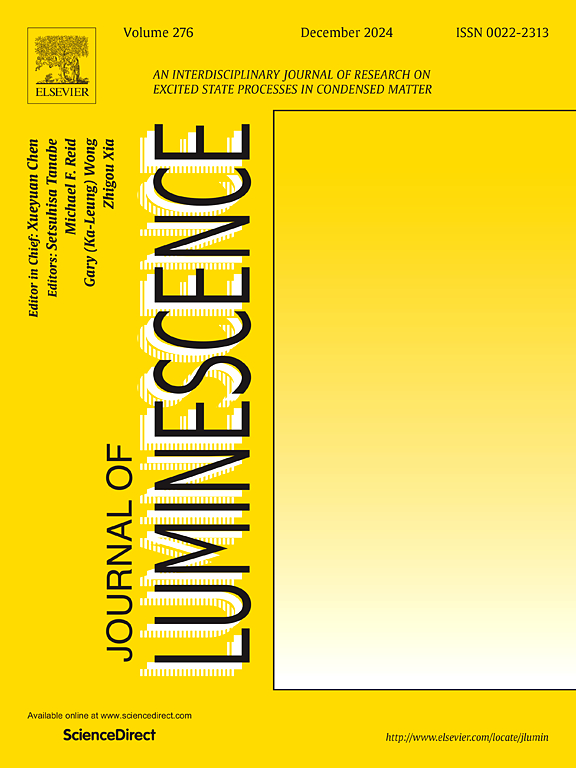Highly sensitive optical nanothermometry using Er3+-doped GdOF nanoparticles: synthesis, characterization, and temperature sensing applications
IF 3.3
3区 物理与天体物理
Q2 OPTICS
引用次数: 0
Abstract
The synthesis and characterization of 1 mol% Er3+-doped GdOF nanoparticles for use as optical nanothermometer are presented. The nanoparticles were synthesized using a microwave-assisted solvothermal method, followed by calcination at 700 °C to obtain the oxyfluoride phase. Temperature sensitivity was evaluated using the fluorescence intensity ratio (FIR) method, based on the thermally coupled 2H11/2 and 4S3/2 levels of Er3+ over the 294–423 K range. The results demonstrate a high sensitivity, with an absolute sensitivity of 3.07 × 10−3 K−1 at 423 K and a relative sensitivity of 1.25 % K−1 at 294 K. These competitive values position Er3+-doped GdOF nanoparticles as promising candidates for temperature sensing applications in biomedicine and nanotechnology, offering advantages over other Er3+-based nanothermometers in different host matrices.

使用Er3+掺杂GdOF纳米粒子的高灵敏度光学纳米热测量:合成,表征和温度传感应用
介绍了1 mol% Er3+掺杂的gof光学纳米温度计的合成和表征。采用微波辅助溶剂热法合成纳米颗粒,然后在700℃下煅烧得到氟化氧相。基于Er3+在294-423 K范围内的2H11/2和4S3/2热耦合水平,使用荧光强度比(FIR)法评估温度敏感性。结果表明,该方法具有很高的灵敏度,在423 K时绝对灵敏度为3.07 × 10−3 K−1,在294 K时相对灵敏度为1.25% K−1。这些竞争性的价值使Er3+掺杂的GdOF纳米颗粒成为生物医学和纳米技术中温度传感应用的有希望的候选者,与其他基于Er3+的纳米温度计相比,它在不同的宿主基质中具有优势。
本文章由计算机程序翻译,如有差异,请以英文原文为准。
求助全文
约1分钟内获得全文
求助全文
来源期刊

Journal of Luminescence
物理-光学
CiteScore
6.70
自引率
13.90%
发文量
850
审稿时长
3.8 months
期刊介绍:
The purpose of the Journal of Luminescence is to provide a means of communication between scientists in different disciplines who share a common interest in the electronic excited states of molecular, ionic and covalent systems, whether crystalline, amorphous, or liquid.
We invite original papers and reviews on such subjects as: exciton and polariton dynamics, dynamics of localized excited states, energy and charge transport in ordered and disordered systems, radiative and non-radiative recombination, relaxation processes, vibronic interactions in electronic excited states, photochemistry in condensed systems, excited state resonance, double resonance, spin dynamics, selective excitation spectroscopy, hole burning, coherent processes in excited states, (e.g. coherent optical transients, photon echoes, transient gratings), multiphoton processes, optical bistability, photochromism, and new techniques for the study of excited states. This list is not intended to be exhaustive. Papers in the traditional areas of optical spectroscopy (absorption, MCD, luminescence, Raman scattering) are welcome. Papers on applications (phosphors, scintillators, electro- and cathodo-luminescence, radiography, bioimaging, solar energy, energy conversion, etc.) are also welcome if they present results of scientific, rather than only technological interest. However, papers containing purely theoretical results, not related to phenomena in the excited states, as well as papers using luminescence spectroscopy to perform routine analytical chemistry or biochemistry procedures, are outside the scope of the journal. Some exceptions will be possible at the discretion of the editors.
 求助内容:
求助内容: 应助结果提醒方式:
应助结果提醒方式:


